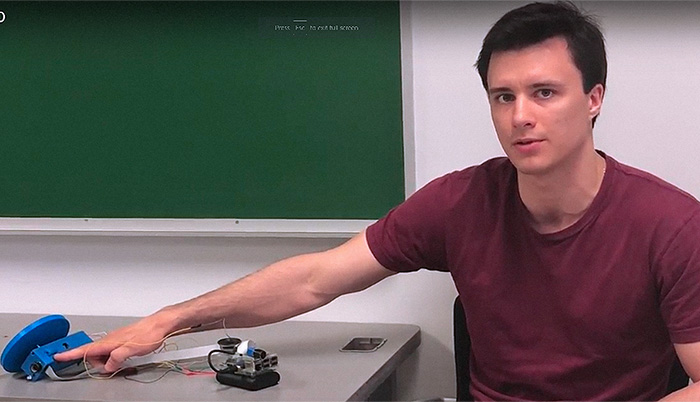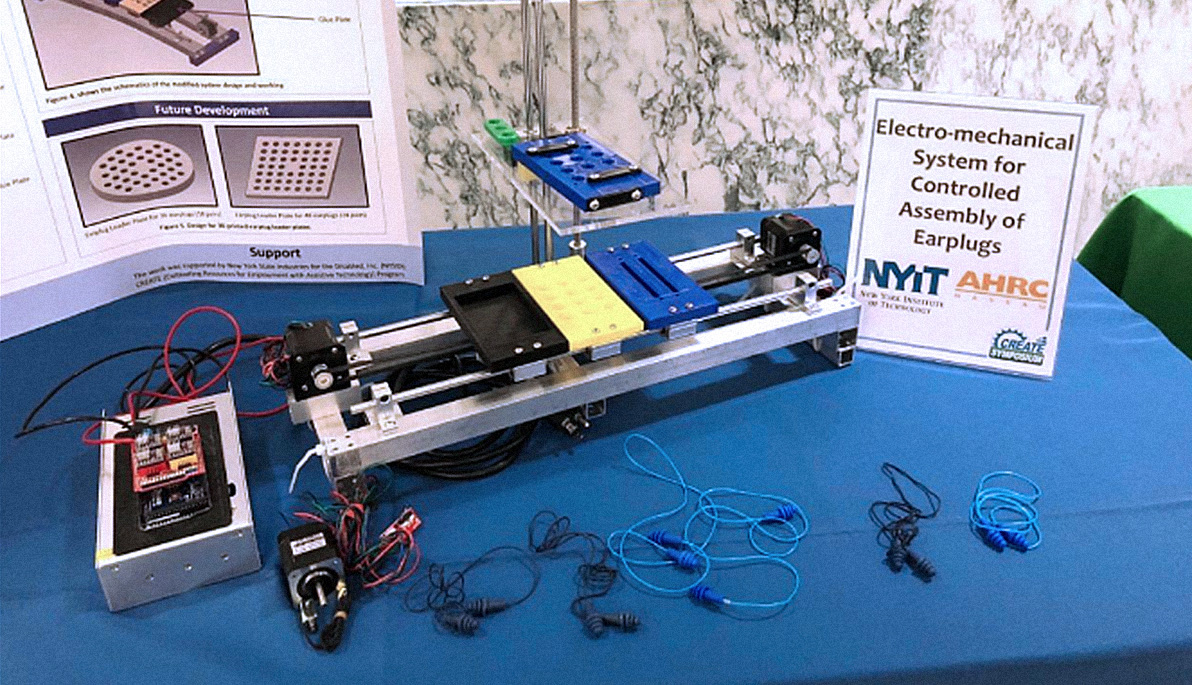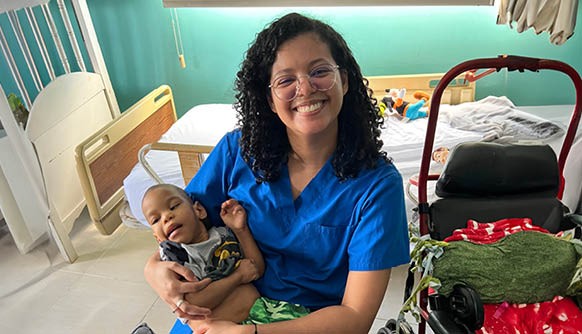News
Challenge Accepted: Inventing Solutions for People With Disabilities
January 7, 2019
Pictured: Second-place prize winners created a device to assist disabled workers in the assembly of commercial earplug products.
A biomedical-design challenge with a heart of gold has given NYIT students a chance to shine. Five teams representing the College of Engineering and Computing Sciences and NYIT College of Osteopathic Medicine (NYITCOM) focused their innovative instincts to create solutions for people with physical disabilities. After two semesters of work, the Entrepreneurship and Technology Innovation Center (ETIC) announced the winners of the 2017–2018 Biomedical Assistive Technology Design Challenge in December.
The idea behind the challenge, according to ETIC Director and Adjunct Assistant Professor Michael Nizich, Ph.D., is to leverage the big ideas and admirable abilities of the respective NYIT colleges and task students with creating actual assistive technologies—“things that help people work, things that help them walk, things that help with their disabilities in any way,” he notes.
Eleven teams–some representing each school exclusively, some uniting students from both schools–entered the competition in September 2017. Five finalists submitted their projects in May 2018, and in December, the winners were announced.
Capturing first place, and the ETIC Biomedical Assistive Technology Design Challenge’s $1,000 grand prize, was the team of Oluwadarasimi Adeniyi, Haoran Wu, Michael Syrov, Michael Mordkovich, and Kaixian Zhu, which invented the Color Pen Reader—a step-up for limited dyslexia-assistive readers that struggle with color content.
Digital readers that scan text and read it back to people with dyslexia and other vision impairments exist, but are mostly limited to black-and-white and fairly plain text. “The current readers have difficulty with colored backgrounds or words over images,” Nizich notes. “This pen was made to enhance current readers.”

Pictured: Michael Mordkovich, a member of the competition's winning team, demonstrates their Color Pen Reader design.
By widening the dyslexia-assistance playing field, the grand-prize winner “enriches the abilities of people with these disabilities to enter the workforce, make sure they’re taking the proper medicine, all kinds of important things,” Nizich adds.
Second place (and the $500 runner-up prize) went to the team of Kayla Ho, Ariana Rennie, Nurbolat Tulegenov, and Celina Zapiti, who came up with the Zipper Aid, a large-handled zipper ideal for people with hand injuries or other dexterity issues.
Third place (and a $250 award) went to the team of Swapnil Barot, Nurbolat Tulegenov, and Kayla Ho. They created an electro-mechanical device that aids factory workers who are assembling commercial earplugs in preparation for distribution.
Fourth place went to students Bruna Fittipaldi, Panagiota Merron, and Ryan Ward, who created a treatment-related video game based around the functionality of people with Asperger’s syndrome, while the team of Anthony Khoury and Stephanie Klosek took fifth place with a proposal for new telemedicine software utilizing existing motion-capture videogame systems. The fourth- and fifth-place teams each received NYIT Certificate Awards.
“All of the teams that completed the grueling competition should be commended,” says Nizich, who’s presided over several ETIC-based design competitions. “Their ideas are always original, always well thought-out, always functional,” the director notes. “I’m overwhelmed by what they can do. It’s really something to watch these NYIT students design and create these amazing technologies in such a short amount of time.”




